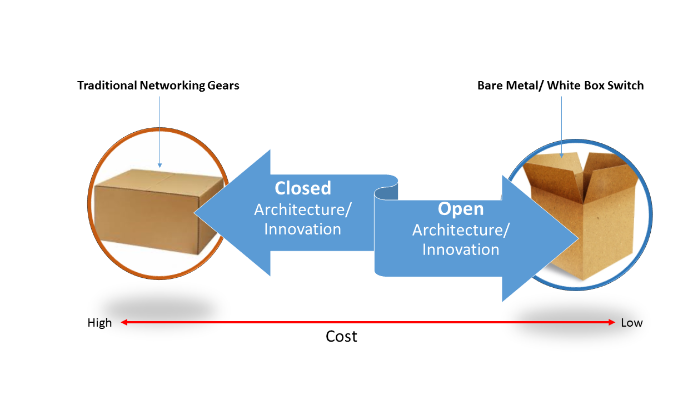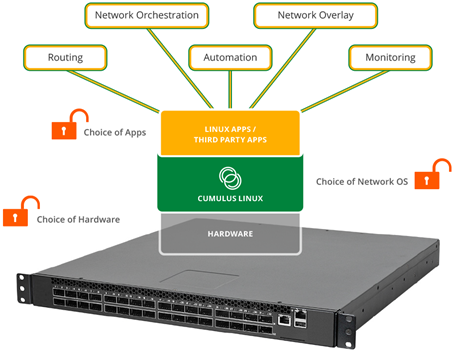Today, nearly all mainstream organizations use traditional (integrated) switches from vendors like Cisco, HP, Arista and Juniper. However, hyperscale folks such as Google, Amazon and Facebook are taking the lead to use white box switch or whitebox switch in the portion of their networks, operating the system in a different manner. So what is the magic behind that? Are these OTTs the only customers of white box switch? You may find some hints in this article.

What Makes White Box Switch Special?
White box switches consists of generic and inexpensive hardware and a preload network operating system (NOS) that can be purchased and installed separately. Often the hardware and software come from different vendors. This is in contrast to a traditional switch that comes as one package including the hardware and the software. For example, when you buy a catalyst switch from Cisco, you are obliged to use Cisco IOS as its operating system. But with white box switch, you are allowed to buy hardware and software separately.
Except offering increased software flexibility/programmability and reduced vendor lock-in, white box switch enables users to have multiple choices on hardware, network operating system (NOS) and applications. The impact of which is profound when it comes to network orchestration, routing, automation, monitoring and network overlay.

What About the Target Market of White Box Switch?
White box switch is initially designed for data centers. Companies that operating mega data centers are especially prefer white box switch for at least two reasons: these companies generally demand for massive deployment of switches and the port density of each switch needs to be high. White boxes are cheaper while offering high-density ports, hence proven to be an optimal alternative. On the other hand, these large-scale companies also value the flexibility and openness of the switch platform, besides CAPEX savings. As an open platform to offer broader flexibility, white box switch free them from traditional L2/L3 protocols, enabling more possibilities to develop and support any SDN based networking.
So, are these large-scale OTTs the only target market for the cheap white box switch? Definitely No!
Any small or medium-sized cloud based providers, or data center of service providers can consider deploy white box switches in data centers, concerning the cost savings and enhanced flexibilities compared with traditional switches. Also because of the familiar IT tools/ commands their technicians are used to. However, white box switches are not yet ready to offer all features and services that a service provider needs to offer, and not yet for deployment in non data center environments.
The Potential of White Box Switch
Based on an open platform, white box switch offers greater possibilities for innovation when compared with traditional networking gears. As the number of vendors that specialized in developing software began to soar, customers can choose from a range of software solutions with added functionality and reduced price.
White box switch becomes even popular in this age of SDN. In traditional switches, software and hardware are integrated into one package, which limits the network innovation greatly. SDN is here to decouple the software from hardware, helping speed shifts in networking. It resembles the standpoint of white box switching. Moreover, the advert of SDN also drives white box forward: when combined with SDN-centric designs, these deployments have resulted in dramatic improvements in automation, operational simplification, and faster innovation. These benefits are now being realized by enterprises of all sizes via commercially available SDN solutions.
Conclusion
Despite the fact that white box switches cannot be applied in non-data center environment for the time being, they are meeting their target market requirements successfully. The potential of white box switch cannot easily be underestimate, it is an ideal alternative that worth to be seriously considered at least for data center applications.
Related Article: Unveil the Myths About SDN Switches
